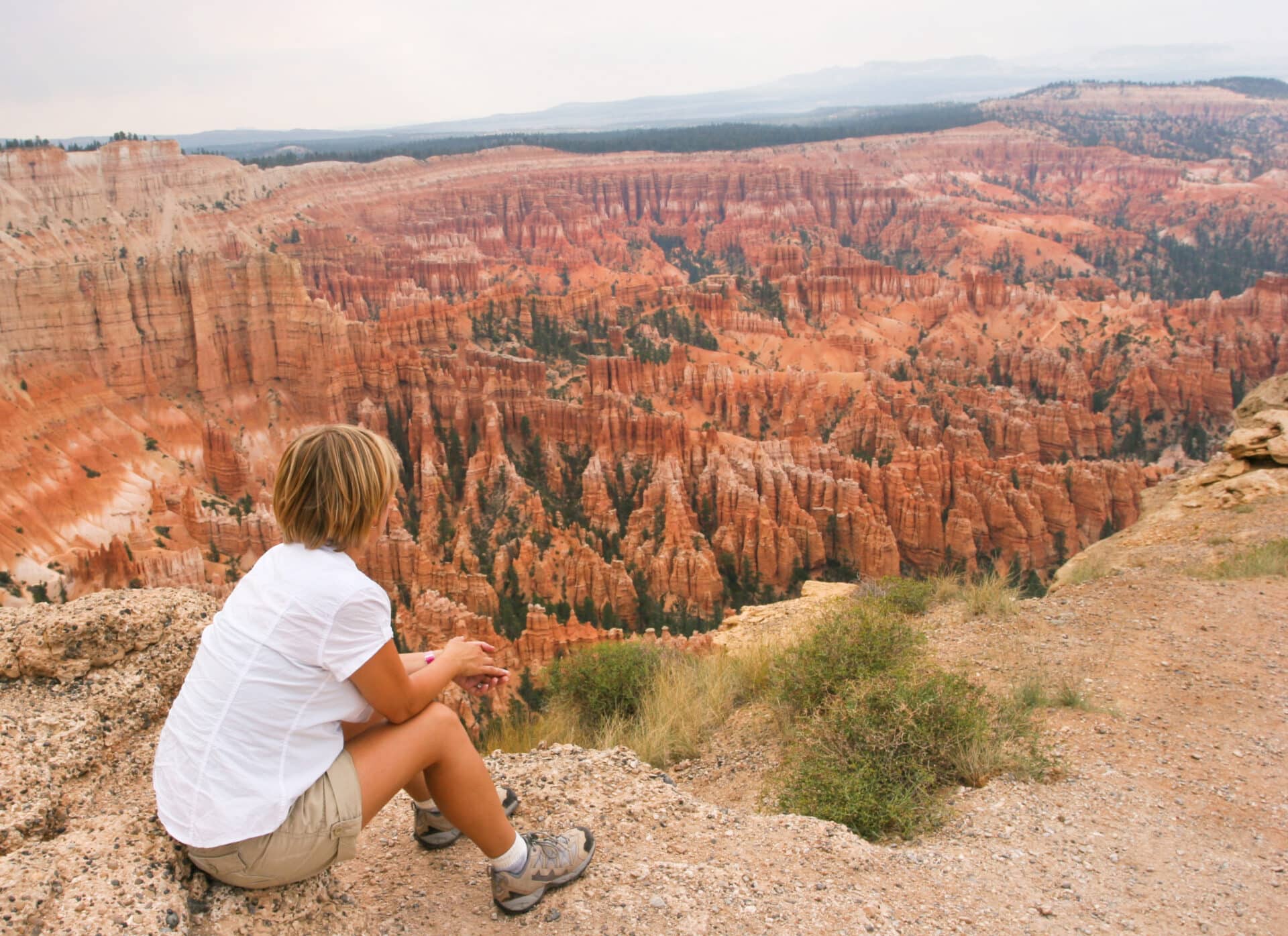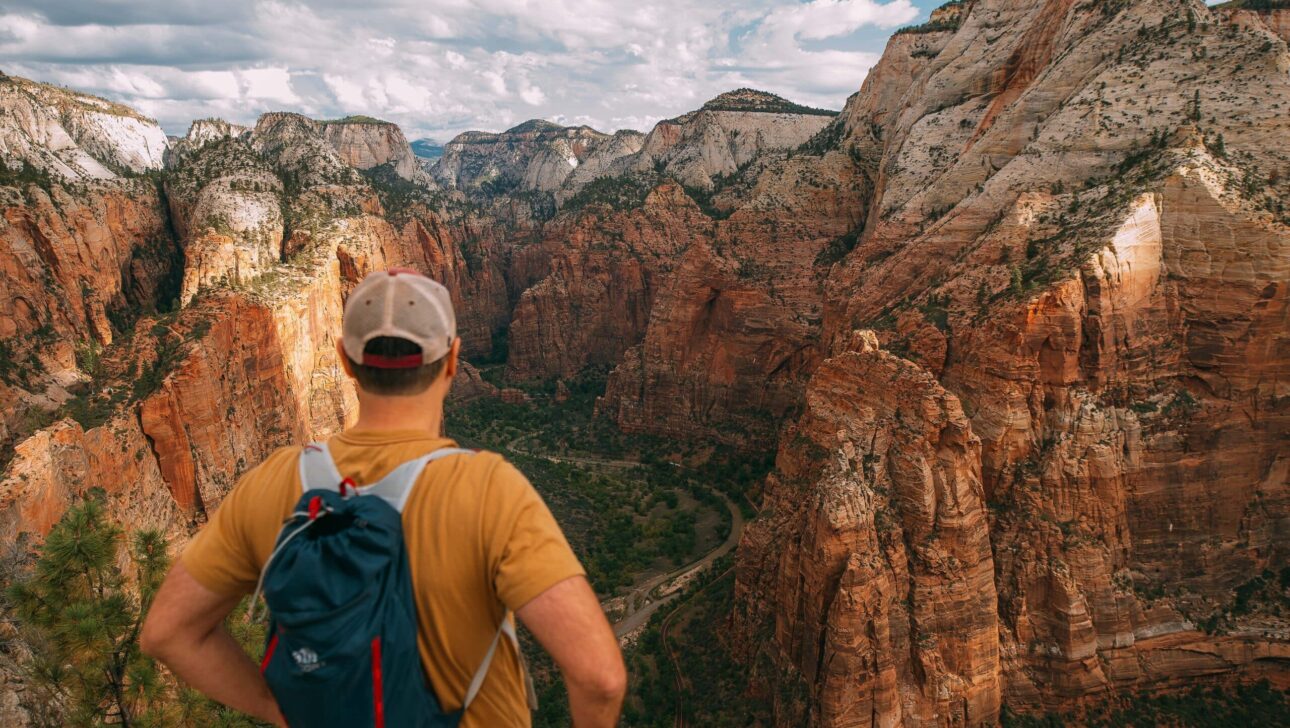Our national parks are some of the best venues to view wildlife specific to those unique habitats. Amid the massive rock formations and other naturally occurring structures at Zion National Park, Bryce Canyon, & the Grand Canyon, you can sight species of mammals and birds throughout the year that may not be found in other parts of the world. An expert guide at Classic Journeys can help you find the best spots at each venue where you can see such wildlife in action, sometimes multiple times during one trip. Some of these species might even be new to you or have names you’re unfamiliar with—that’s half the magic of travel. It isn’t just the landscapes but also the wildlife you could possibly find there that adds to the excitement. Be awed by not just the scenes but also these precious sights and sounds.
#1 Kaibab Squirrel
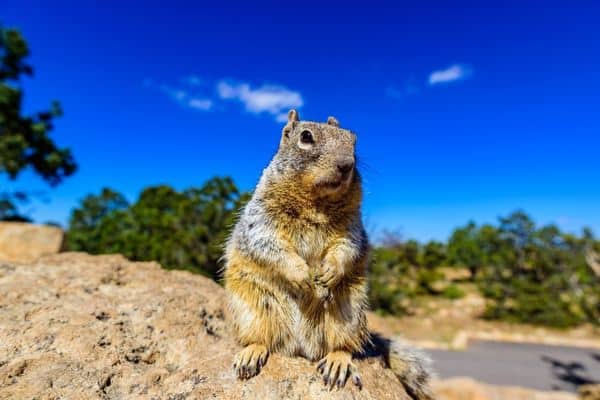
Found only in the North Rim of the Grand Canyon and nowhere else in the world is a subspecies of the Abert’s squirrel called the Kaibab squirrel. The higher elevation of the canyon and the ponderosa pine forests here provide the perfect habitat for the Kaibab to thrive. The creatures enjoy eating the seeds of the pinecones, the twigs and barks of the trees, and other fungi, and fruit and acorns found here. They also build their nests in the trees and help in a way to continue the spread of the pine trees when they crack open the cone and distribute the seeds. It is considered a classic example of evolutionary survival in an isolated region.
#2 California Condor
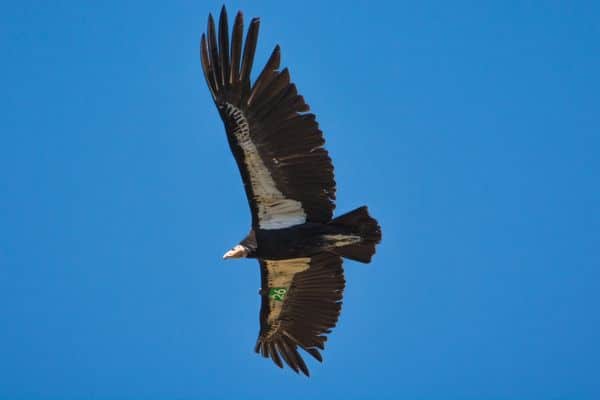
With a wingspan of almost 10 feet, the California Condor is the largest bird of prey in all of North America. And if you are visiting Zion National Park or Bryce Canyon, there’s a good chance you will see one of these perched on a cliff or flying high overhead. What was once an endangered species is now a thriving population thanks to conservation efforts. As a result, if you do get close enough to the bird, you may notice a tag or two on its wing. Like vultures, condors are scavengers, so they eat only dead animals. They are characterized by bald heads with muscular necks and very sharp hooked beaks, which all help when they are feeding on carcasses.
#3 Pronghorn Antelope
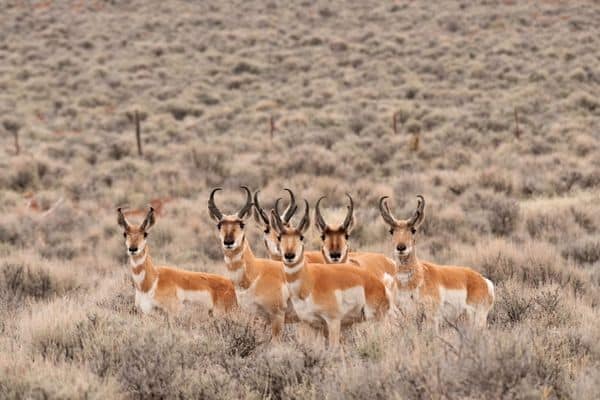
The Pronghorn is one you can observe often in the meadows of Bryce Canyon. The wide-open spaces and scant vegetation make this a great habitat for the Pronghorn to survive. It is considered the fastest land animal in the western hemisphere, a trait developed over time to escape predators. A four-day-old fawn is said to be able to outrun the average human! Simply called Pronghorn, thanks to its forward-facing prong-style horns, these are the only living species with this type of horn. Even more interesting is these horns (or antlers) are covered in a keratin sheath which sheds every year after breeding season and regrows in the spring.
#4 Desert Bighorn Sheep
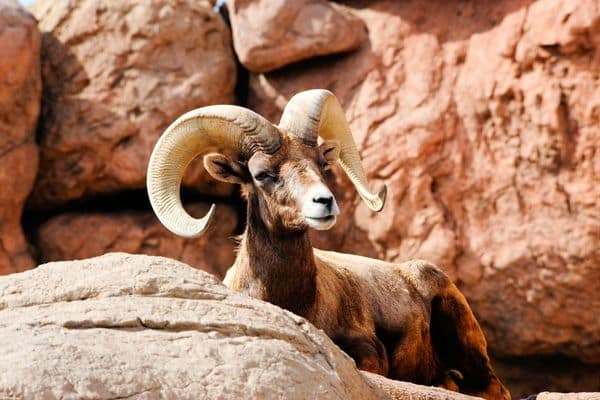
It’s hard to miss Desert Bighorn Sheep. Sure, as the name suggests, these majestic creatures have big horns but it’s the way in which they curve backward that makes them unique. Sighting them can be a challenge though since they blend perfectly with their habitat. At Zion National Park and Grand Canyon, you can see Desert Bighorn Sheep perched atop cliffs or climbing rocks, or maybe even find rams battling each other, participating in what looks like deliberate head butts during mating season, called the rut, to show dominance over other males and win mating access to ewes. You can also find them further north if visiting Montana’s Glacier National Park.
#5 Utah Prairie Dog
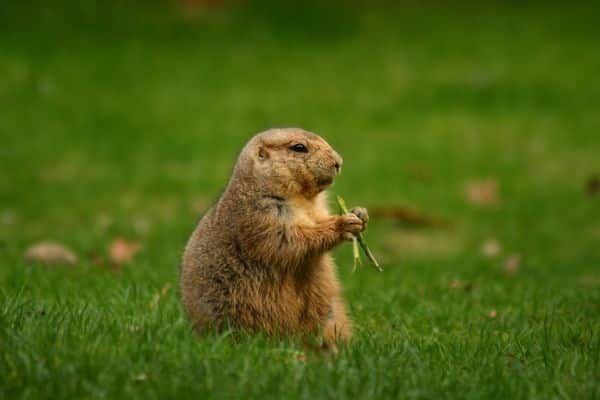
Among the smaller mammals to spot all year round at Bryce Canyon are Utah Prairie Dogs, considered a threatened species and usually seen in colonies. A few 100 are believed to now be thriving in parts of Bryce. What look like cute prairie dogs popping out of underground holes are members of the colony watching out for predators, which consist of badgers, eagles, hawks, coyotes, rattlesnakes, and foxes. Contrary to the name, these aren’t dogs but rather burrowing rodents, that are also the most restricted in range compared to the other four types of prairie dog species found in North America.
#6 Mule Deer
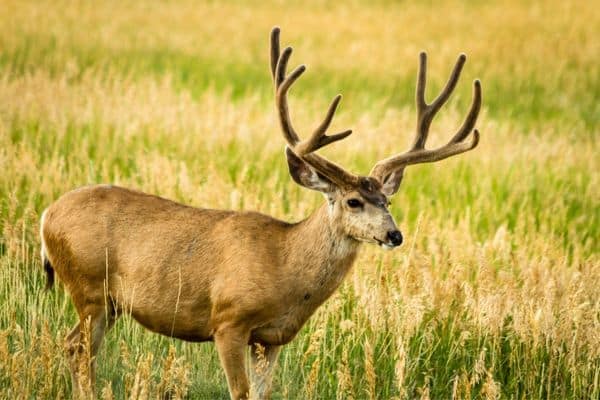
Commonly seen in both Zion and Bryce are Mule Deer which can be identified by their large mule-size ears and regal antlers for the male of the species. The antlers appear in the spring, grow through the summer, are helpful during the rut in the fall, and are shed in the winter for the cycle to be repeated. The coats go from tan-brown in the summer to brown-gray in the winter. Another way to identify them is the white patch on the rump and the small white tail in comparison with its much larger body. The black tip at the end of the tail is also a sign you could be looking at a mule deer.
#7 Peregrine Falcon

Hundreds of Peregrine Falcon call the Grand Canyon and Zion National Park home. Once considered close to extinction, numbers have been increased thanks to conservation efforts. The species gets its name from the Latin term ‘peregrine’ which means to wander—they travel several miles during migration. The bird of prey feeds on other smaller birds by stooping—making a deep dive to startle and capture—a spectacular sight if you can find one at just the right time to see it descending at full speed.
#8 Ringtail Cats
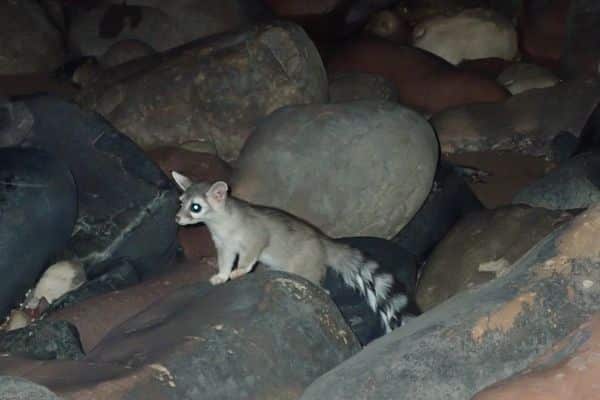
Ringtail Cats are related to raccoons and have foxy features. What you’re looking for is more of a foxy face, with the body of a cat, a tail that’s as long as or longer than the body itself, and the signature bushy black and white ringtail that’s similar to a raccoon. Sighting them at Zion, Bryce, and Grand Canyon or any of the many national parks where they are present, but not abundant, might be made more difficult by the fact that they spend daytime sleeping in caves and surface when dark to catch prey. Ringtails were referred to as miner’s cats as they were used in mines in the 1800s and early 1900s to eliminate the rodent population.
#9 Jackrabbits
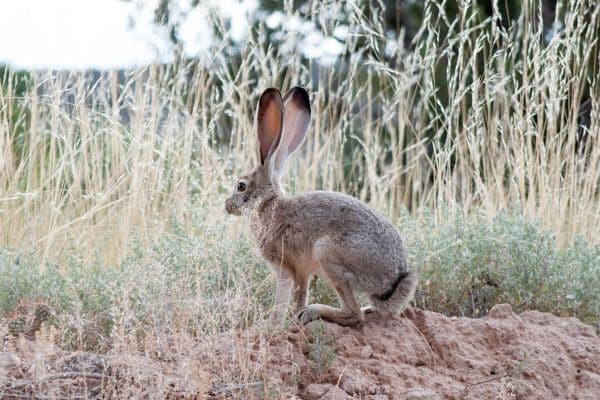
These herbivorous mammals are more hare than rabbit—their long-pointed ears and longer, stronger hind legs make them easily recognizable when speeding through desert lands. Jackrabbits can leap to more than 10 feet and weigh less than 10 pounds on average, making them agile and light creatures that predators like coyotes and badgers find difficult to capture, especially considering their signature zigzag style of running. The species are neither endangered nor threatened so your chances of sighting them are promising, though they are most active around dusk when foraging for food.
#10 Mexican Spotted Owl
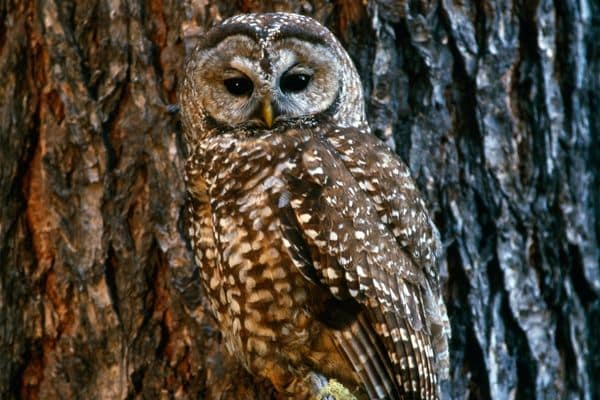
Zion National Park and the Grand Canyon are home to the Mexican Spotted Owl, a species listed as threatened due to habitat loss and now considered stable in numbers thanks to these national parks providing a sanctuary for them in their many narrow slot canyons. The dark and cool spaces are a favorite for these owls that are nocturnal and step out at night to find prey such as mice, rats, and bats. Their dark eyes help differentiate them from other species of owls and they usually sport brown tails that have bands of white on them. Their brown feathers have irregular white spots, and they tend to fly solo except during mating season.
Are you ready to search for these incredible animals on tour with Classic Journeys? Reserve your spot on an upcoming National Parks tour by contacting our Travel Experience Team today!
